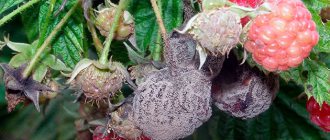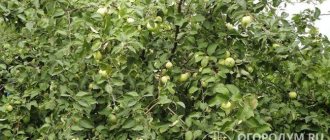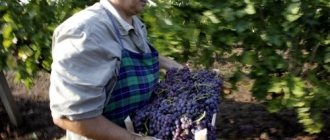Main features of the variety
The early Galbena Nou grape is famous for its decorative properties. Due to the rapid growth of bindweed, bushes are planted near gazebos and other recreation areas. The vine quickly twines the trellises, forming a beautiful wall of rounded small leaves and beautiful golden tassels.
Important! The Galbena No variety took all the best features from both parents.
Due to its tolerance to low winter temperatures, Galbena Nou grapes are grown in the southern and northern regions. The harvest ripens en masse in about 120 days from the moment the buds awaken. The first berries can be tasted after 100 days. Early ripening allows in the northern regions to have time to harvest the entire harvest. The vigorous grape variety Galbena Nou requires a lot of free space. The bushes are planted at a distance of at least 2–3 m. The row spacing is up to 3 m. There are no special requirements for the soil composition of the Galbena Nou variety.
Zolotinka boasts good survival rate of cuttings. If you initially form the bush correctly, the first bunches can be obtained in the second or third year. Cuttings quickly take root by grafting due to good compatibility with other varieties. The Galbena Nou grape vine manages to fully ripen within a season. For one bush the maximum load is 45 eyes. During pruning, the vines leave shoots with 8 eyes, but this can be reduced to 4–5 pieces.
The Galbena variety produces bisexual flowers. Self-pollination occurs even in cold weather with weak flight of bees. The grape vine survives at temperatures down to –24°C. It can withstand surges down to –26°C, but it is better not to allow it to reach a critical minimum. In cold regions, Galbena Nou grape vines are covered in autumn.
The variety is resistant to dangerous diseases: gray rot and mildew. However, grapes can infect oidium, which is Zolotinka's weak point.
Important! The early berries of Galbena Nou are very sweet and tender. Wasps and birds love to feast on grapes. To preserve the crop, you will need to hang traps and mesh shelters.
Considering the Zolotinka grapes, description of the variety, photos, reviews, it is worth knowing the disadvantages. The culture is not suitable for mass cultivation and commercial purposes. The berries of the Galbena variety are rich in aroma, sweet and tender, but do not have a marketable appearance. The clusters are loose, and the rounded shape of the fruit is less attractive to the buyer than finger-shaped grapes.
Features of growing Galbena nou grapes
Galbena know does not require much effort from the gardener when growing. Like other varieties, this grape needs timely watering and fertilizing, loosening and weed removal.
Recent Entries
5 working ways to use tar in the garden 7 indoor plants that help you get married even in adulthood Indoor plants that can bloom in trouble
Mulching the soil around the grapes is a very important technique. Immediately after planting the plant, you need to cover the soil surface with peat, rotted sawdust or hay. Mulch will prevent soil cracking and reduce moisture loss. By mulching the plantings, you will save yourself from the need to loosen and weed out.
Despite the fact that Galbena nou is rarely affected by fungal diseases, preventive treatments are also necessary for this variety. In the spring, before the buds swell, you need to spray the plants with a solution of copper sulfate - 10 g of the drug diluted in a bucket of water. The fungicides Oxychom and Paracelsus are also suitable for the same purposes. The second treatment must be carried out after fruit set, the third 25 days before harvest. Preparations diluted according to instructions will protect grapes from such an unpleasant disease as oidium.
Ripe Galbena nou grape vines tolerate winter well. However, they also need shelter, and the stronger the frost, the more seriously the bush needs to be covered.
The nuances of pruning Galbena nou grapes
Given the vigor of the bush, Galbena no requires proper pruning. The procedure is carried out in the fall, at the end of the growing season. Shoots are usually shortened by 5–10 buds, but lower pruning is also acceptable - by 3–4 buds.
Pruning young grape bushes - in the first and second years
The tendency of the variety to overload dictates its own rules for rationing fruiting. In the spring you need to remove excess brushes, leaving one or two for shoots. However, there are also some nuances here, because underloading also has a negative impact on the harvest. The required number of fruit buds for a bush is determined experimentally. This takes into account the age of the plant, its condition and the climate of the area. Whether the bush was overloaded or underloaded with fruits can be understood next year. In the first case, many thin, underdeveloped shoots will appear on the plant and then the bush needs to be unloaded; in the second, on the contrary, long, thick, so-called fattening vines signal that the load needs to be increased.
For good fruiting, it is necessary to remove all unnecessary brushes.
Description of fruits
The pulp of the Galbena Nou grape variety is rich in juice, sugar, and nutmeg aroma. There is a slight taste of acid. The aroma is felt not only when eating berries. The pleasant smell of nutmeg stands on the plantation near the bushes with ripe grapes.
Zolotinka clusters grow small, weighing approximately 400–700 g. The berries are loosely pressed together. The shape of the brush is conical with branches. Most berries grow round in shape. Less common are fruits with a faint oval. The average berry size is 24x23 mm. Fruit weight is about 8 g.
Attention! The size of the Galbena Nou grape berries depends on the load of the bush. The more clusters left, the smaller the fruits.
The color of Galbena Nou berries is light green with a white tint. When ripe, the skin acquires a golden color. In the sun, barrels of berries turn creamy tan. The juicy pulp picks up sugar just before ripening. The absence of seeds, delicate skin, and a large amount of juice have made Galbena Nou grapes the best treat for children. However, due to excess moisture or overripeness, the berries crack.
Bunches picked at the stage of technical maturity can be stored in a cool place. Grapes are consumed fresh, juices, liqueurs, and wines are prepared. The absence of seeds allows you to get high-quality raisins from the berries.
The video talks about Galbena Nou grapes:
Characteristics
Zolotinka is a very early variety; full ripening of the bunches occurs 104-115 days after the buds swell. Among the early varieties one can highlight Kishmish 342, Yulian and Gordey.
The variety does not have record yields and is not entirely suitable for market cultivation, but with proper care, it may well produce a decent harvest for personal use.
The Galbena no variety is prone to overloading the shoots with clusters, which has a bad effect on both the quantity of the harvest and its quality. Therefore, it is very important to ration the vines in a timely manner.
Zolotinka is highly frost-resistant and can withstand temperatures down to –24-26C without shelter. Due to its early ripening, it ripens well in temperate and cold climates, but needs to be wrapped for the winter.
The variety is practically free from mildew and gray rot . It can sometimes be affected by oidium and is often attacked by wasps and birds.
Planting seedlings
The early grape variety Zolotina is easily propagated by seedlings. For planting, choose a sunny area without drafts. If the bushes are planted around a gazebo, near a canopy or other structure for decorative purposes, the grapes are provided with good ventilation. A small supply of fresh air depresses grapes, increases the risk of diseases, and reduces yields. Near buildings, Zolotinka bushes are planted on the south side.
There are no special requirements for the soil, but the groundwater on the site must lie deeper than 2 m. In the south, the Galbena grape variety is planted with seedlings in the spring after constant warmth has established, or in the fall a month before the expected frost. For northern regions, spring planting is preferable. After a short summer, cold weather sets in sharply, and the Zolotinka seedling simply does not have time to take root.
For grapes, dig a hole 80 cm deep and of the same diameter. Half of the hole is filled with a mixture of fertile soil and humus or compost. If the soil is highly acidic, add a little chalk. At the bottom, be sure to make drainage from stones and sand. After planting, the Zolotinka grape seedling is watered abundantly and covered with a thick layer of peat or sawdust mulch. If there is a threat of cold weather at night, the grapes are covered with agrofibre before rooting.
Features of agricultural technology
Signals for the second year of growing season.
The beginning of agrotechnical activities consists of planting, which includes several points:
- planting period;
- compliance with the planting scheme;
- compliance with hole dimensions;
- fertilizing;
- correct placement of seedlings;
- layering and compacting.
Seedlings can be planted in spring or autumn, with slightly different methods at different times.
- Autumn planting should take place no later than November, since new gardens need time to adapt before the first frost occurs.
- Spring planting takes place from the second half of March to the end of April.
Landing
- The diameter of the hole should depend on the size of the growth of the crown, vines, stems, and foliage, so the size is at least fifty centimeters.
- The depth of the hole varies within seventy centimeters.
- It is recommended to use potassium and phosphorus fertilizers as fertilizers However, ready-made fertilizers should be diluted with organic matter - humus, chicken droppings, mullein.
- Backfilling the hole should be carried out in layers - drainage, fertilizing, fertile soil, just soil.
The seedling is located 15 cm below the surrounding ground surface.
- In this case, the first layer must be filled with great care so as not to damage the roots. Next, each layer must be firmly compacted.
- The surface can be mulched with straw, humus, and sawdust.
- Root zone It is watered abundantly, and subsequently the humidity level is strictly controlled.
The ground around the seedling is shed abundantly with water.
Care
To ensure comfortable growth of grapes, also in order to obtain the expected productivity results, the plant should be carefully cared for.
A special point in care is monitoring the condition of the soil under the bushes.
The tree trunk circle needs to be loosened and cleared of weeds.
If mulch is used after planting, loosening and weed removal is simplified due to the fact that the mulch layer does not allow the growth of most weeds, and the soil will always be loose under the mulch.
However, the absence of weeds is one of the main conditions for normal growth and development of the crop if there is no mulch .
Adviсe
Preventive treatment against pests and diseases will also not slow down the development of bushes; for this reason, spraying serves as the foundation of agricultural technology.
- Since the variety is prone to overload, sanitary pruning is also not the last condition for ensuring comfortable growing conditions.
- We must not forget about regular watering, especially during the growing season . You can also apply nitrogenous fertilizers before the start of the growing season, but strictly control the amount due to the fact that an overdose of nitrogen can burn the roots.
- Nitrogen takes an active part in the formation of peduncles and foliage systems, and strengthens the trunk.
- To prevent oidium, you need to prevent the bushes from growing to such an extent that the vines feel a lack of fresh air.
Therefore, pruning stems not only improves taste, increases the size of fruits and clusters, but is also a preventive measure against fungal diseases.
Vineyard care
Continuing the review of the photo and description of the Zolotinka grape variety, we need to pay a little attention to caring for the crop. Moderate watering is required as the soil dries out. It should be taken into account that the berries of the Zolotinka variety are prone to cracking. You can’t over-water it, but drought won’t do any good either. The bushes must be watered:
- in early spring;
- before flowering;
- while pouring berries;
- after harvesting;
- late autumn.
When it comes to fertilizing, the Zolotinka variety prefers organic matter. In spring and autumn, mineral complexes are added. Fertilizing is usually carried out simultaneously with watering. After absorbing the water, instead of mulch, you can cover the ground with a thick layer of dry rotted manure. Organic matter will prevent the evaporation of moisture, plus at the same time it will feed.
Mandatory procedures require periodic weeding. Weeds should not grow under the Zolotinka grape bushes. Additionally, the soil is loosened after each watering. The resulting crust prevents the passage of oxygen to the roots.
Harvest and storage
The grapes are harvested during the period of technical ripeness, when the berries acquire the color and sweet taste characteristic of the variety. The harvest is harvested in dry weather. The bunches are carefully cut and placed in plastic boxes. In a cool room, at a temperature of 0...-2 degrees, grapes can be stored for 1-1.5 months. The berries are eaten fresh, juices, jams, raisins are made from them, and table or dessert wines are made.
Vine pruning
Painless pruning of the vine is done in the fall. An adult bush of the Zolotinka variety should consist of a maximum of 45 eyes. After the sap flow has stopped, the pagons are cut off, leaving 4–8 buds. The vine is tied with rope and prepared for wintering. A shield made of boards, straw or thick cardboard is laid out on the ground. The vine is laid on top, covered with dense material and covered with earth. In the spring, an overwintered bush is inspected. Broken and frozen shoots are cut off.
The Zolotinka variety even requires summer pruning. It consists of removing excess inflorescences. However, underload or overload of a grape bush will have to be determined only experimentally. If you leave a lot of inflorescences, the berries will be small. By autumn the vine will grow thin and will not have time to ripen. A small number of inflorescences is also not in favor of Zolotinka grapes. The bunches of berries will grow large, but the vine itself will fatten. By autumn, thick, too long lashes will appear. The number of inflorescences left depends on the size and age of the bush and is selected individually by the gardener.
Reproduction methods
Galbena nou grapes propagate vegetatively. In this case, the new plant receives all the parental qualities. For propagation, cuttings left after pruning are used. The branches are placed in a glass of water until the roots appear. Then they are placed in a container with fertile soil mixture, and when they are 1 year old, they are planted in open ground.
Grapes can be propagated by grafting or layering. To graft, you need to take a Galben nou eye and graft it onto any grape variety. When propagating by layering, the one-year-old vine is bent to the ground, sprinkled with soil, watered throughout the season, and when roots appear, the layer is cut off from the mother bush and planted in a new place.
Prevention and pest control
The Zolotinka variety needs protection from oidium. Subject to the conditions of agricultural technology, the disease is rare. It is difficult to cure affected Zolotinka grapes. It is better to follow preventive measures. The onset of the disease is recognized by the foliage. The plate becomes curly, gradually becoming covered with a white coating of mold. Over time, signs appear on flowers, young vines and berries. Affected inflorescences dry out and fall off. In dry weather, fruits crack, dry out, or begin to rot when exposed to high humidity.
It is possible to prevent the spread of the disease throughout the Zolotinka grape bush at the initial stage. On a cool, dry day, spray with colloidal sulfur. Fungicides show good results.
As for preventive measures, Zolotinka grapes require proper care. Firstly, the bushes are provided with good ventilation. Correct pruning of the vine, as well as removing excess inflorescences, allows you to avoid thickening. To allow the wind to flow freely under the bushes, do not allow them to become overgrown with grass. Timely fertilizing increases the immunity of grapes.
Wasps, moths and birds love to eat the juicy berries of the Zolotinka. The grapes are protected from feathered guests by pulling nets. It's more difficult with insects. Ripe berries should not be sprayed with chemicals. Bottle traps filled with sweet syrup can help. Sometimes gardeners practice immersing bunches in gauze bags. The method is effective when the material does not lean against the berries. If the gauze comes into contact with the skin of the fruit, the wasps will still gnaw through it and draw out the juice.
History of the variety's creation
The goal of Soviet breeders of the 60–80s. of the last century was to develop “ideal grapes” that could adapt to different climatic conditions and at the same time have bright taste characteristics. For this purpose, the Frumoas albe variety was taken, which gave the newly created Galbena nou its muscat taste, and Russian Korinka, a seedless grape with early ripening.
Thus, the new variety has absorbed the best qualities of its ancestors. It is also called Zolotinka, and from Moldavian the variety is translated as “new yellow”. The birth of a new variety took place at the Novocherkassk All-Russia Research Institute of Viticulture and Winemaking named after. Potapenko Ya. I. (Novocherkassk, Rostov region, Russia).
The variety quickly gained popularity due to its characteristics and was loved by gardeners in the middle climate zone of the former USSR. Now the variety is still grown in the CIS countries.
Did you know? The most expensive grape in the world is considered to be the
Roman ruby , which is grown in Japan. It has unique taste qualities. The last record for its sale was broken in 2021, when one bunch of grapes was sold for almost 11 thousand US dollars.
External data of Zolotinka
To avoid mistakes when growing, it is necessary to study the characteristics of the plant.
Bush and shoots
Height 3 m, suitable for grapes for decorating a site. The vigorous plant allows it to be planted on facades, gazebos, sheds and other buildings. Thanks to this feature, Galbena No is in demand among those who create decorative structures.
Leaves and berries
The grape leaves are not large. The fruits are round in shape, light green or yellowish in color. As the berries ripen, they turn amber. The taste characteristics are high, there is a pronounced nutmeg aroma.
There are no seeds. The brushes are formed with medium looseness. They weigh up to 700 g. One berry weighs 9 g.
See also
Description of the Kokur grape variety, planting and cultivation rulesRead
Advantages and disadvantages of a hybrid
Galben Nou has many positive qualities, thanks to which summer residents choose him. Every gardener can appreciate the variety.
Pros:
- high stable yield;
- early ripening;
- undemanding to soil composition;
- the vine ripens completely;
- ability to self-pollinate, in cloudy cold weather, without the participation of insects;
- cuttings take root well;
- frost resistance;
- immunity to certain diseases.
Minuses:
- vigorous growth;
- high susceptibility to wasps and birds;
- cannot resist oidium;
- low commercial quality of brushes and berries.
Zolotinka is absolutely not suitable for growing on an industrial scale. It's not a matter of taste, but of appearance. Such brushes do not attract buyers.
Description of the grape variety "Angelica"
The bush of this variety is very tall. Flowers do not require special pollination; they are bisexual. The cuttings take root well. The vine ripening is good, but regular pruning and thinning of the bush is required. It grafts well and combines with different rootstocks. Angelica is prone to pea berries and often needs to thin out the bunches. Just like King Ruby and Pereyaslavskaya Rada.
The berries are very large, elongated oval in shape, collected in loose, loose clusters, reaching a weight of about 1-2 kg. The weight of one berry can be 20-30 g. The skin of the berries is thin, delicate, and pale pink.
The pulp of the berries is very tasty, sweet, juicy and crispy. The berries have very few seeds, about 1-2, sometimes up to 4. The high sugar content and excellent taste make this variety indispensable for growing in your own backyard.
Angelica is one of the pink varieties that many people love. Among the pink varieties, Gurzufsky Pink, Pink Flamingo and Dubovsky Pink are also known.
Forum statistics
207036 Messages in 1634 Topics from 5593 Users. Last user: Amaya Last message: “Let's talk about the weather in Vash...” ( Today at 07:52:22 ) Latest messages on the forum.
Now on the forum
50 Guests, 7 Users
Users in the last 15 minutes: 64nikolay64, GALINA ANOKHINA, Yura, zsb, Polina77, spotlight, Mikhail Alekseevich [Blocked] [Section Moderator] [Forum Moderator]
Maximum online today: 77 . All-time maximum online: 2758 (28 July 2021, 17:22:51)
Users who visited the forum in the last 24 hours
Total: 293
(Visible: 292, Hidden: 1) 1963, 64nikolay64, GALINA ANOKHINA, Yura, zsb, Polina77, spotlight, Mikhail Alekseevich, Svetla777, Quiet, Marshal, Nikolay S., therapist, Liza, Capricorn, lomakin1969, Alexander Vl., Elvira2017 , Andrey76, Slavka, Mikhail77, ElenkaF, Tatyana B, Alex65, Cherkessk, Eugene, leonidych, vladimirM, yotmast, mers, Serg1707, SNovichek, hanter64, znakomij, Alexander K, Vardan, Sergey Fer, Anatoly Sivkov, Alexey V, Ilya 77 , Andrey Gladilin, Tatyana A., Belgorodets, in Astrakhan, Oksana Kopp, sem_en, Vladimir 153, skier, Igor Viktorovich, slavalimon, Primorets, OlgaOs, SANYCH, 31rus, mystic69, DorontsovPeter, Andrey Tsvetkov, Buba, igor222, Elena Z, vlad51, Kenig, Nikolay Rex, Sergey 1965, Vladimir Buturlakin, DSW, psv1960, Dmitry 77, Vasily V., Vyacheslav03, Natalia Nikolaevna, Sergey Tashchiyan, Igor Sergeevich, alexsandr, kvg, Pioneer, Ekaterina Polyanina, nicson7, Elena Aleshchenko, Alexander -ask-34, Verona, Igor F., Taker, Henry, Yuri72, L.A.P., Gaivoronsky Yuri, Sergeevich, Sergei Chistokletov, Svetlana Streletskaya, Galinka, Alexey Deminov, Naumov Igor, Vyacheslav136, Gloomy, Katrin, AndSanych , Mikhno Alexander, Ded31, Filippov Oleg, Vladimir ++, Lydia58, ALEXANDER BRYANSKY, Vladimir-kanevskaya, DIL, Amber7394, Marina Protasova, TITOVA LYUBOV, Linx, alexander66, Natalya M, Mikhail Fesenko, Amaya, Alexander71, Boris 1952, tsv , Maximilian, 25nata35, nadia, Igor_K, Alexander Kolesnikov, Ivan Levin, Pitko, weather forecaster, eSAa, cecet71, atseton, Alexander Smirnov, Vladimir Kostochkin, Vladimir Berdnikov, Gocha, pioneer-2, LeXa_KoT, Sergey 61, Sergey Yuryev, Erem, alexss, Evgeniy52, Skif, Vladimir Kovba, dayton, Yuri Semenov, N.A. Sokolov, Pavlentiy, Sa-shura, Volgogradka, Dmitry Anatolyevich, Grandfather Igor, Andrey Lis, Bublichenko Alexander M, Marina Krymskaya, stenlly2010, irahelm, Vyacheslav Vladimirovich , Vladimir Shilov, Aprel, Dmitry Badaev, gheo55, y_fed, rambo, Yagodka, Valentina Ivanovna, Kryn, oleg9f, DED2, Svetlana Korotina, Oleg Ivanovich Zavezen, Eduard., santra, L2k2m7n, Alexander48, Viknik, Andrey 31, m2d, Valery Rastorguev, Soshnin Yura, Gardener - amateur, Galina, Vasily1111, gardener, marlin64, Salex, sergei, Sergey Ko, Ramiz, Victor_, kosmos, potap05, Yuri 36, VitalySD, Inna161, Vova Kapran, Vladimir Shcherbinin, Valerie, niy1, cfibr , Andrey68, kulol3, thanatos, Serzh1978, Realist, Artur53, max2008-01, LOZA, AlexanderD, Grandfather Young, Natasha, Zayac, ketch, Rita, alx-74, Iv Iv, Alexander150, Igor K, Vasily Viktorovich, VeraNiK, kdm57 , Veniaminovich, Boris Sokolyansky, 77volt, , vikbublik, neposny, Evgen, Victoria Aleksandrovna, Serezha 64, Wintel, Airbone, teri, Sergey Lomonosov, Khramov, serginio, Leonty Yarygin, Irina O., Ser, Nadezhda Grig, Lyubov S., netolya, Saisan, Alexey Agryzkov, Vadi, Zinaida, Vadim, Alexander Taganrog, Sergey Sukhonos, Snezhinets, evgen_26, nau_63, Masha_sadovod, Gennady163, krasnovlad1, Alexander Zinoviev, Vasily 53, Roman Fedorovich, TIS, Alexey Sergeevich, arnyusha, Zheka, Nurtas , kradievska, nick041, Valentina Medvedeva, Sergey43, Andrey S., Nikolay Lipunov, Mst, Vertuoz2, Vladimir VS, NatalyaMed, freesia, Kinna, Mikhail Michurinsk, alekcsan1, VALERY TAMB, Sasha57, MikhAf, Y_Azer, Andrey Beribesov, hunter1955, amateur nuts, Keys, Ivan Shmelev, Pestle, anton_slash, Nadymchanka, Sergey 31, Volgar, Pavel 64, Tatyana Volzh, Elektronik_t, Alexander 61, Alexander Gai
Spring or autumn?
When planting in autumn, grapes must have time to take root before the onset of frost. Therefore, in the northern regions it is better to plant in the spring. Definitely in warm soil. In the south, autumn planting is preferable. In hot, dry weather, it will be more difficult for seedlings to take root. Especially if you don’t water often.
Main landing rules:
- the distance between seedlings in a row is 2-3 meters and between rows is at least 3 meters;
- the size of the planting hole is half a meter in diameter, the depth is greater than the length of the roots of the seedlings;
- the pit is prepared in advance: filled with humus, superphosphate or complex fertilizer is added;
- the seedling is sprinkled with soil halfway up, watered, the soil is compacted and soil is added up to the first eye plus 2 cm;
- For the winter, young seedlings need to be covered.
In northern regions, such as central Russia, etc., it is better not to take risks and cover even mature bushes. With good care, signals appear in the 2nd year - the first fruits. They may differ slightly from varietal characteristics. Be patient - in a year your grapes will show themselves in all their glory!











